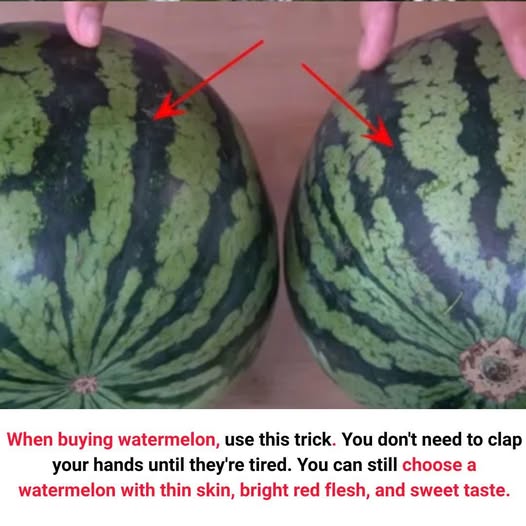
Watermelon is a quintessential summer fruit, offering a refreshing burst of sweetness and hydration. However, selecting the perfect watermelon can be a challenge. Many rely on the traditional method of tapping or knocking on the fruit, listening for a hollow sound that supposedly indicates ripeness. But this technique is not foolproof and can often lead to disappointing choices.
The Limitations of the Knocking Method
The knocking method involves tapping the watermelon and interpreting the sound it produces. A hollow sound is believed to signify ripeness, while a dull sound suggests the fruit is underripe or overripe. However, this method has several drawbacks:
- Subjectivity: The interpretation of sounds can vary between individuals, leading to inconsistent results.
- Inexperience: Without extensive experience, distinguishing between the subtle differences in sound can be challenging.
- Potential Damage: Repeated knocking can bruise the fruit, affecting its quality and shelf life.
- Social Considerations: In some markets, knocking on produce may be frowned upon or considered inappropriate.
A Visual and Tactile Approach to Selecting Watermelon
Instead of relying on auditory cues, consider a more reliable method based on visual inspection and tactile assessment. This approach focuses on the following characteristics:
- Skin Texture and Thickness: A ripe watermelon typically has a thin, smooth skin. Thicker, rougher skin may indicate that the fruit is underripe or overripe. Gently press the surface; it should be firm but yield slightly under pressure.
- Color and Pattern: Look for a watermelon with a uniform, deep green color and distinct, well-defined stripes. Faded or irregular patterns can be a sign of poor quality.
- Field Spot: This is the area where the watermelon rested on the ground during growth. A creamy yellow or orange field spot indicates ripeness, while a white or pale green spot suggests the fruit was picked too early.MPH Online
- Shape and Symmetry: Choose a watermelon that is symmetrical and free from irregular bumps or indentations. Asymmetry can be a sign of inconsistent growth and may affect the fruit’s taste and texture.
- Weight: A ripe watermelon should feel heavy for its size, indicating a high water content and juiciness. Compare similar-sized fruits and select the heaviest one.
- Stem Condition: If the stem is still attached, it should be brown and dry, signifying that the watermelon was harvested at peak ripeness. A green stem may indicate premature harvesting.
Additional Tips for Selecting the Perfect Watermelon
- Avoid Bruises and Soft Spots: These can be signs of overripeness or internal damage.
- Listen for a Hollow Sound: While not the primary method, a gentle tap can still provide supplementary information. A ripe watermelon often produces a deep, hollow sound.
- Check for Uniformity: Ensure the color and texture are consistent across the entire surface of the fruit.
- Smell the Stem End: A ripe watermelon may emit a sweet, fruity aroma near the stem area.
Benefits of Choosing the Right Watermelon
- Enhanced Flavor: A properly ripened watermelon offers optimal sweetness and texture.
- Nutritional Value: Ripe watermelons are rich in vitamins A and C, antioxidants, and hydration.
- Cost-Effectiveness: Selecting the right fruit reduces waste and ensures you get the best value for your money.
- Culinary Versatility: A sweet, juicy watermelon can be enjoyed on its own or incorporated into various recipes, from salads to smoothies.
Conclusion
Selecting the perfect watermelon doesn’t have to be a guessing game. By focusing on visual cues and tactile assessments—such as skin texture, color patterns, field spots, and weight—you can confidently choose a ripe, sweet, and juicy watermelon without resorting to the traditional knocking method. This approach not only enhances your fruit-eating experience but also ensures you enjoy the full nutritional benefits that watermelons have to offer.
Remember, the next time you’re at the market, trust your eyes and hands over your ears. Your taste buds will thank you.



